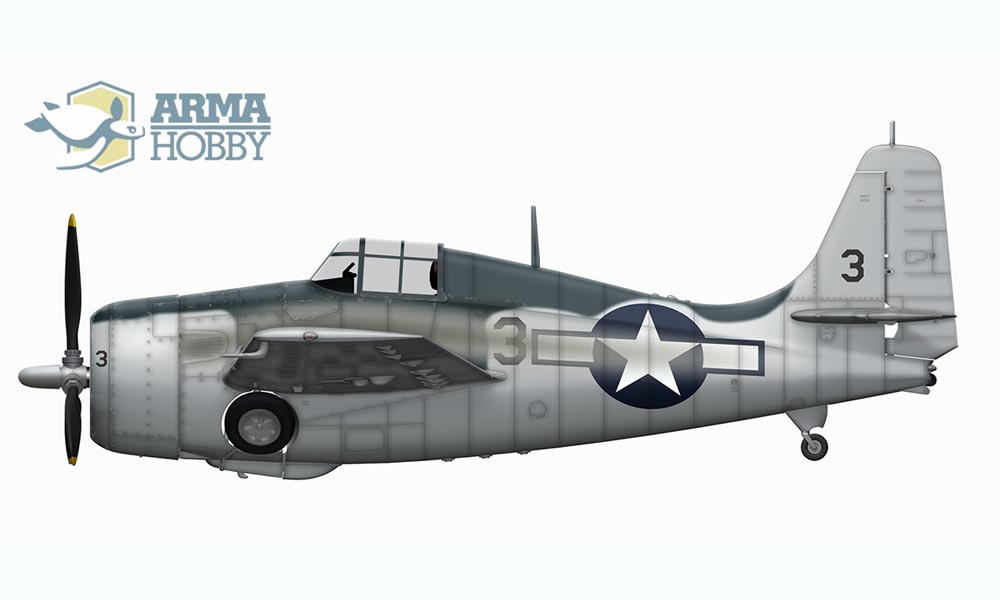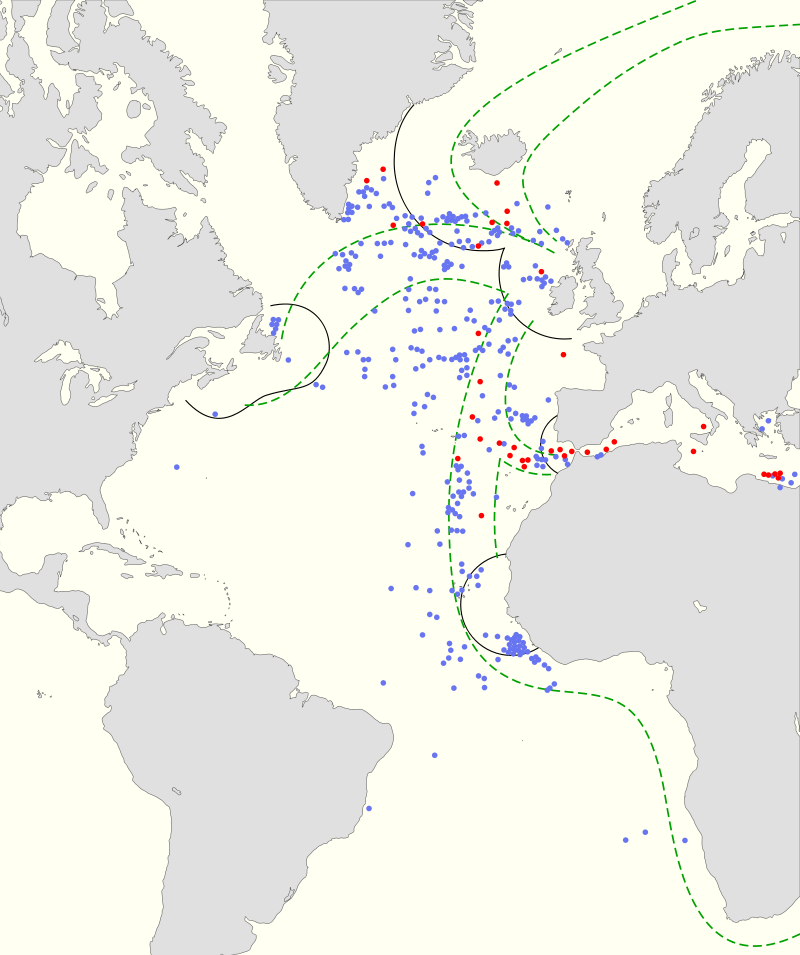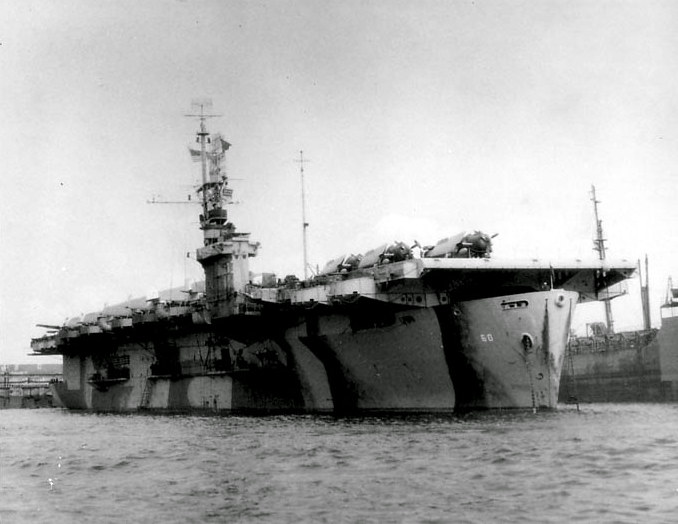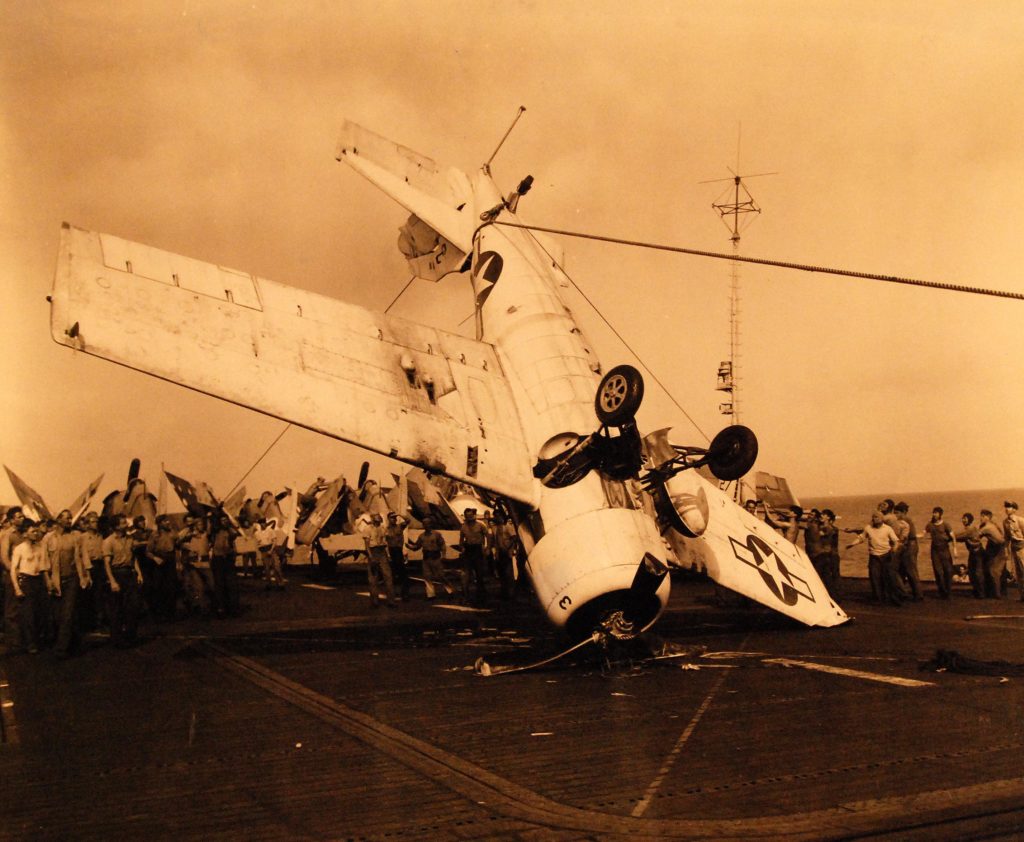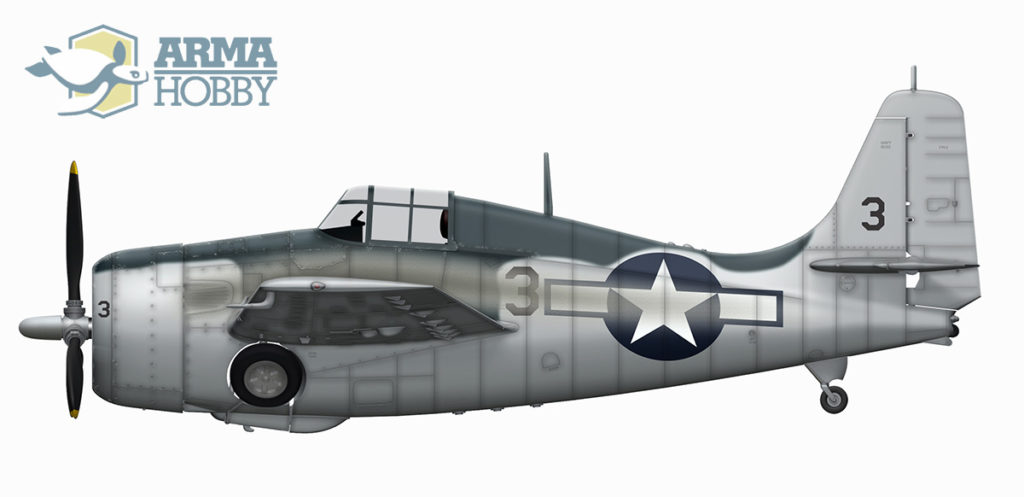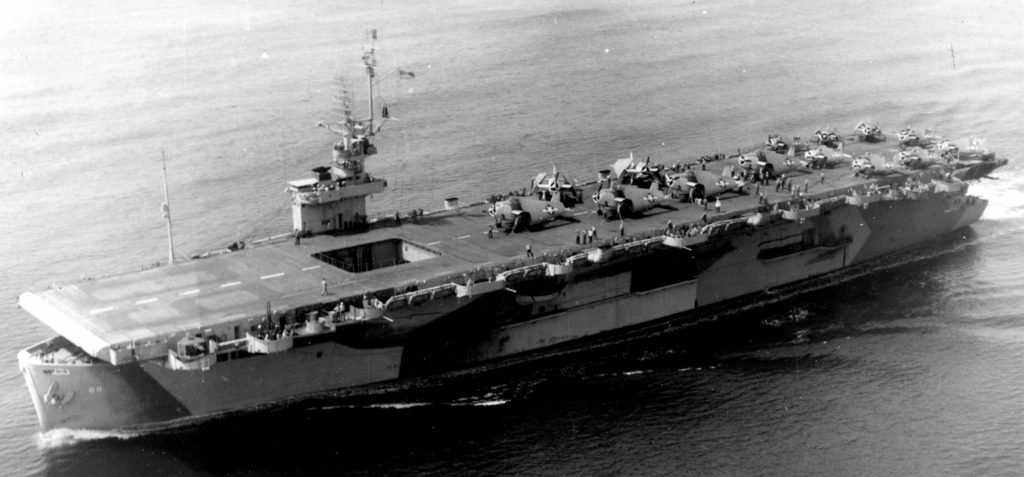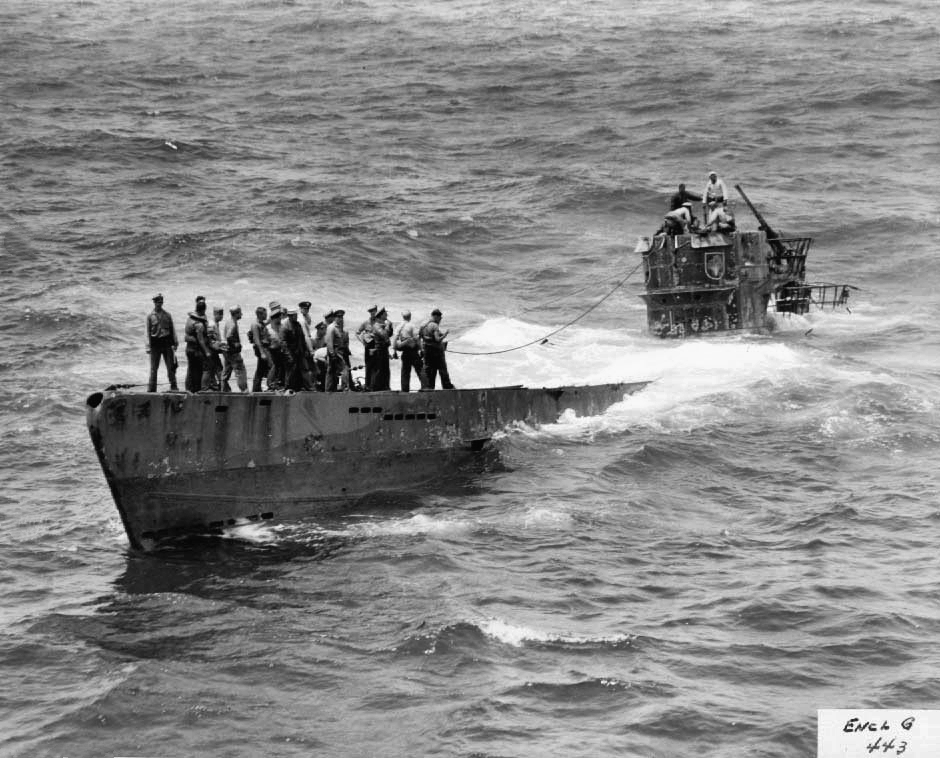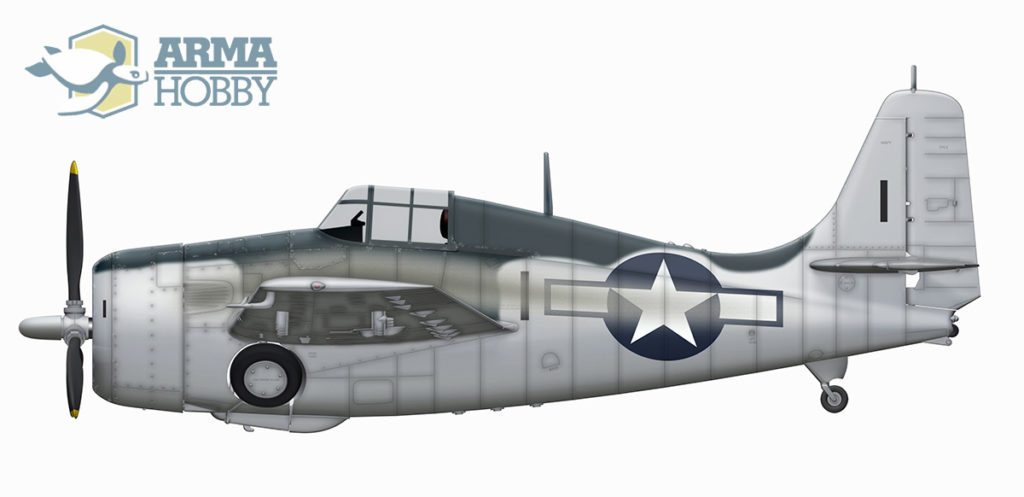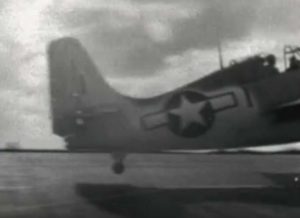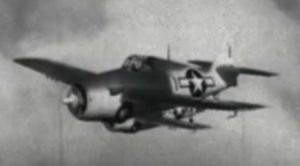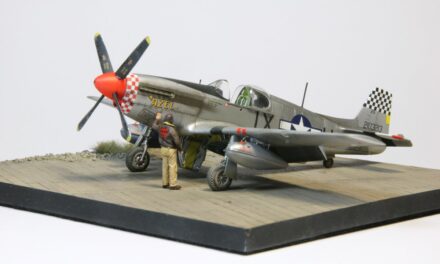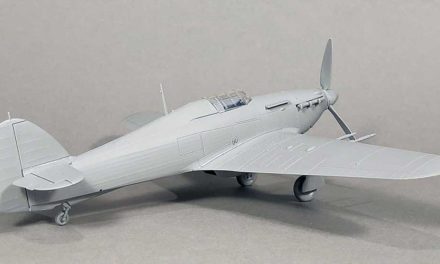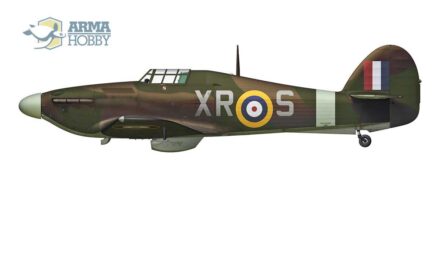Wars aren’t only big battles fought in the air, at sea or on land. They are also daily struggles which seem to be less spectacular but can’t be overestimated. The Battle of Atlantic was the longest struggle of the Second World War. It started in September 1939 and finished in May 1945. One of the most interesting episodes of this battle was capturing a German U-boat by the boarding group from US escort carrier.
Mid Atlantic Gap, map shows convoys routes (green), aeroplane escort ranges (black circles) in 1941. Allies ships lost this year are marked with blue dots. Map source – wikimedia commons.
The Atlantic Gap
German strategy to win the Battle of Atlantic was the isolation of Great Britain which need to bring supplies by sea. Battle led to the development of new strategies and technologies. Convoys, wolfpacks, sonar, radar, destroyers, corvettes, Enigma, etc. But it was airforce which was needed the most. Initially, the range was limited by distance from land bases. It led to the Mid-Atlantic Gap, a part of the ocean not protected by aviation. It was U-boats paradise where German submarines could attack without aircraft counteraction. It changed In 1943 when long-range aircraft, such as Liberators, and escort carriers closed the Gap. One of these carriers was USS Guadalcanal and its fighters – FM-2 Wildcats
USS Guadalcanal, in Casablanca (French Marocco), 28-30 March 1944, Photo: National Archives.
Small Carrier – Big Job
Escort carriers were perfect shipsto fight German U-boats. They weren’t made for big battles but to protect convoys against German submarines, aircraft attacks and aerial reconnaissance. They were part of task groups of carriers, destroyers and other escort ships. USS Guadalcanal was one of Casablanca Class escort carriers, the most numerous type, with 50 ships built. It was launched in the middle of 1943 and its first combat cruise began on 5th January 1944.
New Weapon Against Aubmarines
Apart from typical depth charges, anti-submarine aircraft started carrying rockers. At the beginning, they were 3.5-inch rockets with solid steel warhead (called 3.5 inch FFAR) which were used to penetrate submarine pressure hull. They were launched from British Mk.4 channel-slide launchers, which were mainly used on Avengers. Its main disadvantage was the drag it made. It wasn’t a big problem on the Atlantic where it was really hard to meet opposition In the air. To fight the drag the California Institute of Technology developed Zero Lenght Launcher Mk.5 which reduced the drag.
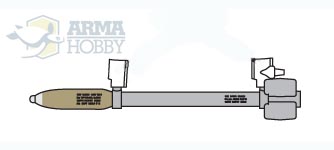 The rockets changed too. 3.5-inch warhead was replaced with an explosive one. But it enlarged the size of a warhead to 5 in. (they were called 5 ich FFAR)which led to instability, caused aiming problems and reduced speed. The ultimate project was 5 in Rocket (HVAR) widely used at the end of the war and during the war in Korea.
The rockets changed too. 3.5-inch warhead was replaced with an explosive one. But it enlarged the size of a warhead to 5 in. (they were called 5 ich FFAR)which led to instability, caused aiming problems and reduced speed. The ultimate project was 5 in Rocket (HVAR) widely used at the end of the war and during the war in Korea.
Drawing – 5in FFAR rocket with “zero lenght” launcher stubs for FM-2 Wildcat
.
More information you can find on these websites:
.
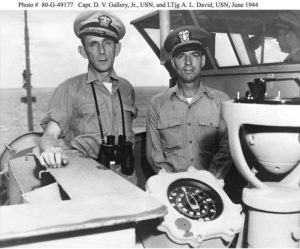 Captain Daniel V. Gallery
Captain Daniel V. Gallery
The history of USS Guadalcanal captain is as interesting as the ship itself. He had three brothers who all served in the US Navy. He joined the navy in 1917 when joined US Naval Academy. He finished his studies in 1920 and took part in the Olimpic Games in Antwerp on the wrestling team. From the beginning, he was interested in naval aviation. At the end of the 30’s he won national air race flying modified Douglas Devastator. When the war broke out he was in London where he was US Navy Attache. During the Battle of Britain, he was delivering Spitfires from a factory to RAF units. Later he claimed that he was the only US Navy pilot who flew during the battle but they weren’t combat missions though.
When the United States joined the war he became a commander of the Fleet Air Base on Iceland. After a successful campaign against U-boats, when he used land-based aircraft, he got a new task. He became a commander of USS Guadacanal. His tasks group sank 3 German submarines and captured another one. In September he was given a fleet carrier USS Hancock which he led during the Battle of Leyte. After the war, he was criticizing plans to reduce the role of the US Navy and lost one star. To honour his service (and his two brothers, both admirals too) a frigate FFG-26 was named USS Gallery.
Three U-boats sunk
USS Guadalcanal became a core of Task Group 22.3. On the 16th January, after receiving information about a group of U-boats that were refuelling 500 miles west of the Azores, the group gained its first success. Just before the sunset, the commander sent 8 Avengers which found and sank U-544. Landing on the carrier deck is a difficult task, but landing at dusk or in the darkness is very hard. Only 4 Avengers landed without problems. The fifth one slid on the side of the deck and made landing even more difficult. The sixth tried to land but crashed in the ocean. The last two ditched in the water. The Captain decided to improve the crew’s readiness and ordered to practice the service of the aircraft that crashed on the deck. The men were practising until they were able to remove the aircraft in less than 4 minutes, and only then did he allow them to throw the Avenger into the ocean.
Next patrol commenced on the 7th March. After a month without success, its commander ordered VC-58 to start night patrols using the full moon. The Group’s next prey was U-515 which was forced to surface after continuous attacks by destroyers and aircraft and the German crew ran out of fresh air. It was sunk by the crew. The next day, at dawn, the aircraft found another U-boat which was charging batteries on the surface. It was sunk with bombs and rockets from 3 Avengers.
USS Guadalcanal returned to Norfolk in glory. During the rest, VC-58 was replaced by VC-8 that had recently finished its anti-submarine training. Basing on his experience in anti-submarine warfare, Capt. Gallery came up with an idea.
USN Aircraft Atlantic Camouflage Scheme
US Navy aircraft used in the Atlantic wore different camouflage from those used in the Pacific. Officially there were two – one, dedicated to the southern, warmer and less cloudy, part of the Atlantic was three-tone camouflage. The colours were white, Light Gull Grey and Dark Gull Grey placed similarly to the three-tone camouflage in the Pacific. But there isn’t any photographic evidence of planes painted that way.
FM-2 Wildcat, BuNo 16130/3, VC-8, crashed on board of the USS Guadalcanal, by Ltn. (j.g.). F.H. Behlen III, North Atlantic, 30 May 1944. Clearl;y visible white undersurfaces and one two-colour fuel tank. In background vivsible aircraft with grey uppersurfaces. Photo: US Navy.
FM-2 Wildcat from photo above, artwork by Zbyszek Malicki.
The second one was developed to be used in cloudier Northern Atlantic. There were only two colours used – White and Dark Gull Grey. But actually there were two white paints – lower surfaces were painted gloss white, sides matt white. Quite interesting is the way the propeller was painted – they were white out to the inner edge of the cowling opening to reduce the dark colour of the engine visible from the front.
Further information on this topic you can find: here
.
USS Guadalcanal departs Norfolk for the third anti-submarine cruise , 15 May 1944. Photto: US Navy.
The Third Patrol and the Greatest Success
On the 15th May, the Task Group 22.3 set out on another patrol. Basing on the intelligence reports, Gallery knew where his next victim might be. But the search was very long. He ordered the boarding group to be ready because he thought that damaged U-boat would be a perfect prize. His previous victim, U-515 was sunk by the crew when was forced to surface after sustaining serious damage.
For four days his group was tagging after U-boat. On the 4th June, an escort destroyer USS Chatelain got the contact. The news was immediatelysent to other ships of the Group which started the hunt. Two FM-2 found a submarine easily as it was just under the surface. The destroyers attacked the enemy with depth charges and hedgehog. The second attackcaused serious damage to the U-boat.
Captured U-505, photo: Bob Canchola, BT, USN (Ret.)
Capturing the U-505
Damaged ship surfaced only 700 metres from the destroyers which opened fire immediately. Soon Wildcats joined the attack with their .5 inch machine guns. Germans were trying t Man their anti-aircraft guns but most of the crew panicked and jumped into the sea. It was the reason that the German crew didn’t manage to sink the ship. Seeing that, American sailors held their fire and rowed the boats towards damaged submarine which was still moving with 10 knots. Due to damaged rudder, the ship was turning circles. When they boarded the ship, three Americans armed with Thompson machine guns and grenades went under the deck. One of them was a sailor with a Polish name, RM3c Stanley E. Wdowiak. They didn’t meet any resistance but there was MOS more and more water so they had to find and close kingstones. When the situation under control, Americans searched the ship to find documents and the Enigma. American ships took 59 prisoners. After a long struggle Americans managed to give the U-boat a tow. On the 7th June ATF-96 Abanaki ocean tug took U-505 and towed it to the harbour.
Short documental film on capture of the U-505 by USS Guadalcanalforce task , source: Departament of Defence.
After a short rest, USS Guadalcanal Task Group returned to patrol West Atlantic. Unfortunately, they didn’t gain further success. In the autumn the commanding officer was replaced and a new squadron, VC-69, replaced VC-8. This short film was probably shot at that time.
It’s hard to say which scenes were taken during the action when U-505 was captured (there are some scenes with German prisoners) and which were filmed in the Autumn. Despite the doubts, it’s a great reference showing escort carrier duties during the Battle of Atlantic.
FM-2 Wildcat, with 5in FFAR rocket stubs, aeroplane from documental on capture of the U-505. Artwork by Zbyszek Malicki.
Two film shots with Wildcatem No I, see Atlantic camouflage and rocket stubs.
English translation by Dominik Sędziak
You may be interested:
- Model FM-2 Wildcat Expert Set with markings from USS Guadalcanal in the Arma Hobby webstore
- Guadalcanal I (CVE-60) by Mark L. Evans
- Capture of U-505 on 4 June 1944
Wanted to be Philanthropist, statesman and patron of the arts. Temporarily focused on developing scale model production in Poland. Co-founder of Arma Hobby. Designer of kits: TS-11 Iskra, PZL P.7a, Fokker E.V, PZL P.11c, Hawker Hurricane, Yak-1b, FM-2 Wildcat, P-51B/C Mustang and 1/48 Hurricane.
This post is also available in:
 polski
polski


